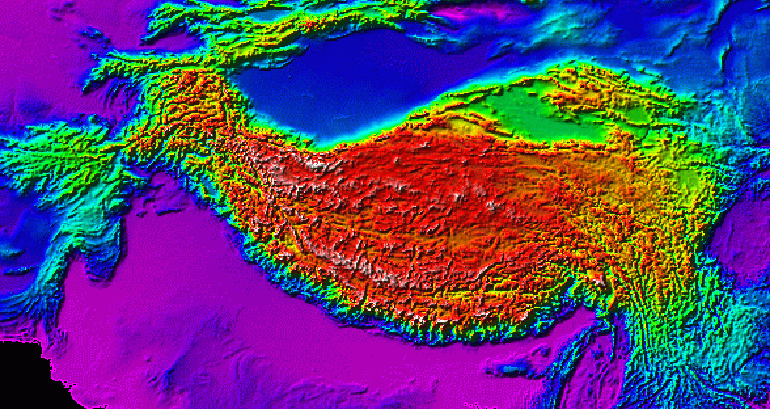The Tibetan plateau (The Roof of the World) is the largest plateau on Earth with an average elevation of 4880 m and a crustal thickness of 65 km. On this image, high elevations are shown in grey and red and low elevations in blue. The Tibetan Plateau is bounded by the desert of the Tarim and Qaidam Basin to the north and the Himalayan, Karakoram, and Pamir mountain chains to its south and west. Its eastern margin is more diffuse and consists of a series of alternating deep forested valleys and high mountain ranges that run approximately north-south, bounded by the lowlands of the Sichuan Basin of China. Tibet results from the convergence and the collision between the Indo-Australian and the Eurasian plates.
|
 |
|